FREE DOWNLOADS: Articles & Case Studies
Learn More About Wearable Safety Technology
Download one of our FREE articles or case studies to learn how MākuSafe’s industrial wearable safety device and predictive data and analytics software can benefit your organization.
Schedule A Demo
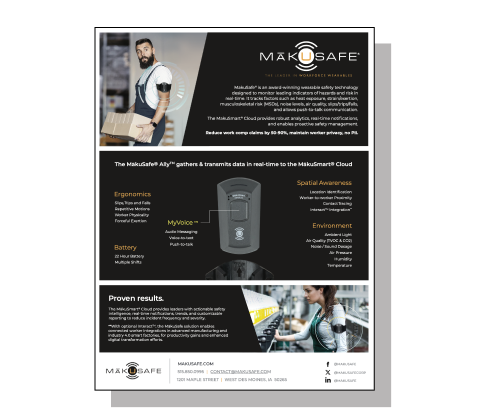
MākuSafe Overview Flyer
Learn more about how the MākuSafe solution monitors EHS leading indicators of hazards including; slips/trips/falls, MSD’s, strain/exertion concerns, sound exposure, air quality, and more. Real-time notifications, a robust analytics intelligence platform, and voice reported near-misses, enable proactive safety management, risk mitigation, and loss control before incidents result. MākuSafe has reduced work comp claims by 50-90%, maintains respect for worker privacy collecting no PII, and integrates the connected worker into advanced manufacturing smart factories for industry 4.0.
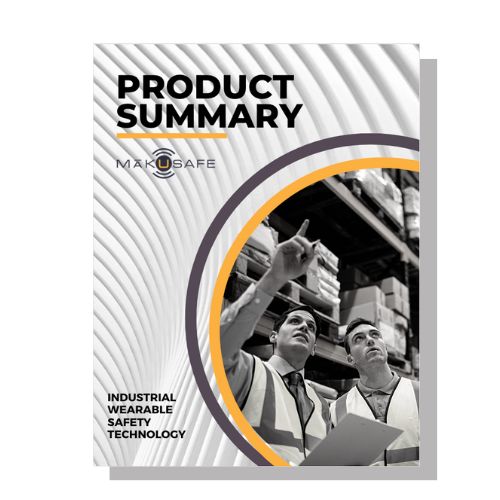
Product Summary
MākuSafe’s award-winning wearable safety technology monitors EHS leading indicators of hazards including; slips/trips/falls, MSD’s, strain/exertion concerns, sound exposure, air quality, and more. Real-time notifications, a robust analytics intelligence platform, and voice reported near-misses, enable proactive safety management, risk mitigation, and loss control before incidents result. Learn more about specific areas of impact in this detailed product summary. Download here.
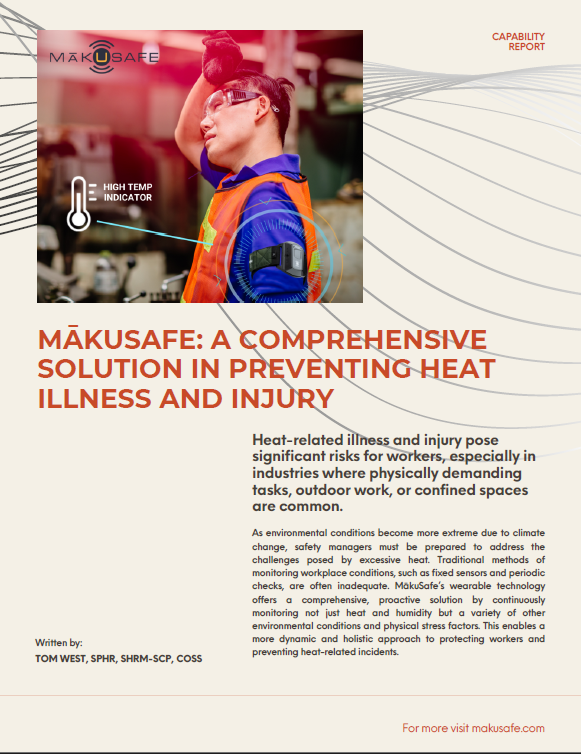
MākuSafe: A Comprehensive Solution in Preventing Heat Illness and Injury
Heat-related illness and injury pose significant risks for workers, especially in industries where physically demanding tasks, outdoor work, or confined spaces are common. As environmental conditions become more extreme due to climate change, safety managers must be prepared to address the challenges posed by excessive heat. Traditional methods of monitoring workplace conditions, such as fixed sensors and periodic
checks, are often inadequate. MākuSafe’s wearable technology offers a comprehensive, proactive solution by continuously monitoring not just heat and humidity but a variety of other environmental conditions and physical stress factors. This enables a more dynamic and holistic approach to protecting workers and preventing heat-related incidents.
Download the article below to read in full:

FleetPride Case Study: Wearable Tech Drives Record Safety Performance
As the nation’s largest distributor of heavy-duty truck and trailer parts, FleetPride faced significant risk from strain and exertion injuries across its distribution centers. To mitigate rising concerns around musculoskeletal disorders (MSDs) and environmental exposures, FleetPride partnered with MākuSafe® and the National Safety Council’s MSD Solutions Lab to document their experience with wearable safety technology. The results were striking—2024 marked their best workers’ comp year in over a decade, with one facility logging more than 365 days without a single incident. Leveraging real-time physicality and environmental data, FleetPride improved air quality, lighting, and airflow, while driving stronger employee engagement through MyVoice™ hazard reporting. Over 300 workers now wear MākuSafe daily, making it a required part of PPE at six distribution centers and helping FleetPride standardize safety KPIs and transform risk mitigation company-wide.
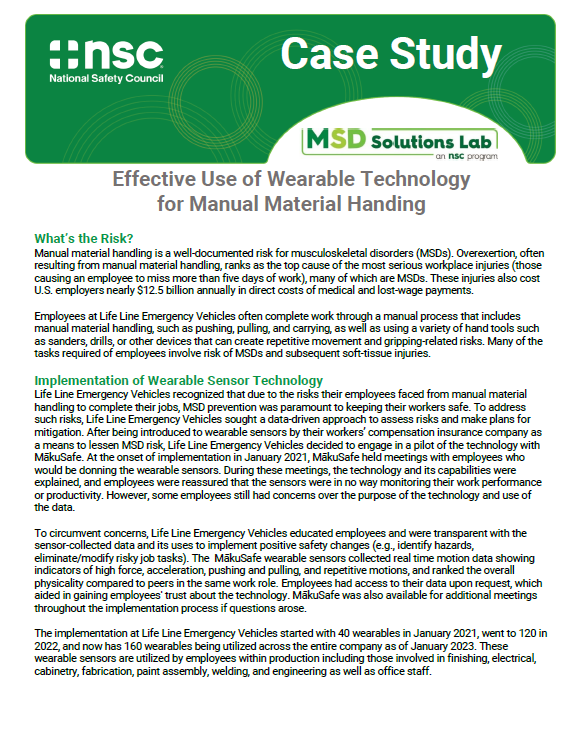
Case Study: Life Line Emergency Vehicles Case Study: Data-Driven Ergonomics Improve Safety Culture
At LifeLine Emergency Vehicles, where employees frequently perform manual tasks like sanding, welding, and cabinetry in ambulance manufacturing, overexertion and MSDs were a top concern. With support from their workers’ compensation insurer and in collaboration with The National Safety Council’s MSD Solutions Lab, LifeLine implemented MākuSafe® wearables to capture real-time exertion and repetitive motion data. In just two years, they reduced workers’ compensation costs by 60%, cut recordable injuries in half, and improved hazard mitigation through increased “good catch” reporting—up to 335 identified issues in a single year. The data also empowered ergonomic changes like improved work tables and lift carts. By fostering transparency, involving employees in data review, and using insights to guide daily safety improvements, LifeLine elevated its culture of prevention.
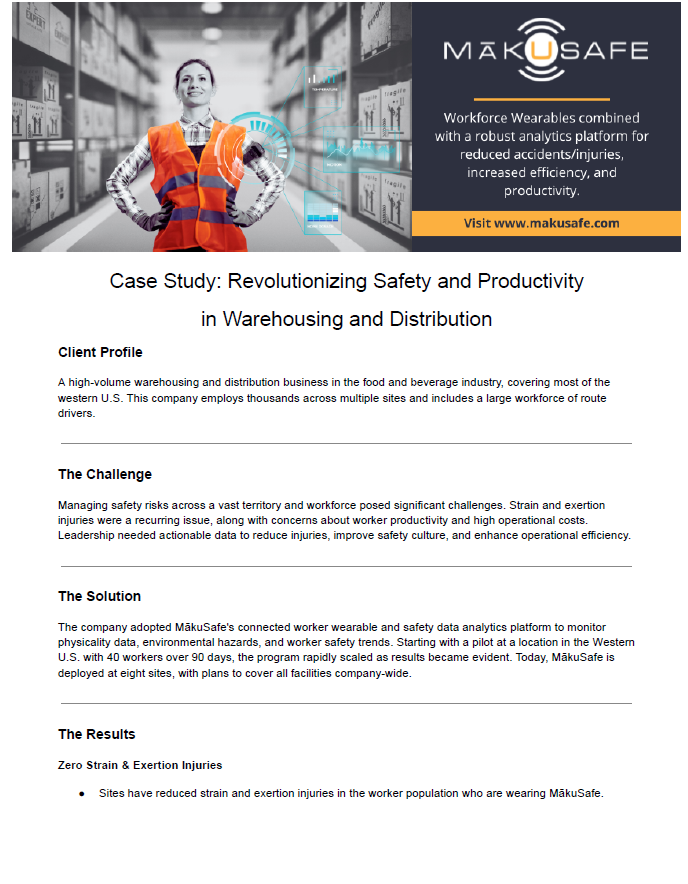
Case Study: Revolutionizing Safety and Productivity
in Warehousing and Distribution
Read about how a high volume national warehousing and distribution organization implemented MākuSafe and; significantly impacted safety, reduced strain & exertion injuries to zero, enhanced productivity, and made data driven process changes.

EU-OSHA Case Study: SMART ARMBAND FOR REAL-TIME DATA ANALYSIS FOR HEALTH & SAFETY
EU-OSHA recently published this case study about MākuSafe as part of its occupational safety and health (OSH) overview programme (2020-2023), examining the challenges and opportunities of smart digital tools and monitoring systems for improving workers’ safety and health.
Download the publication from their site here.
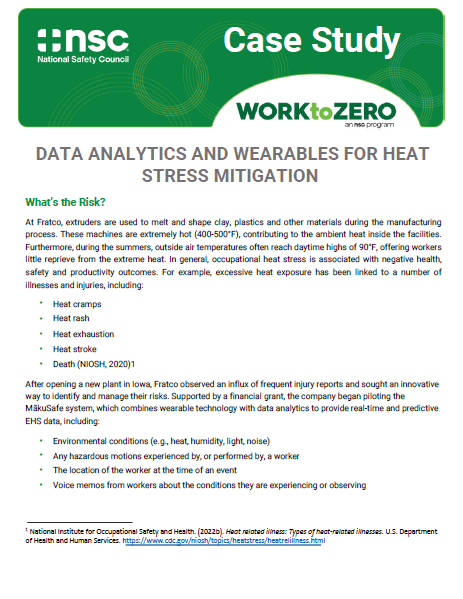
National Safety Council’s Work To Zero Case Study
A MākuSafe client, Fratco, worked with the National Safety Council to outline their experience with MākuSafe wearable technology and the impact it has had in keeping their workers safe. Of particular interest to NSC was how Fratco was using MākuSafe to combat heat related concerns.
Download the article below to read in full:
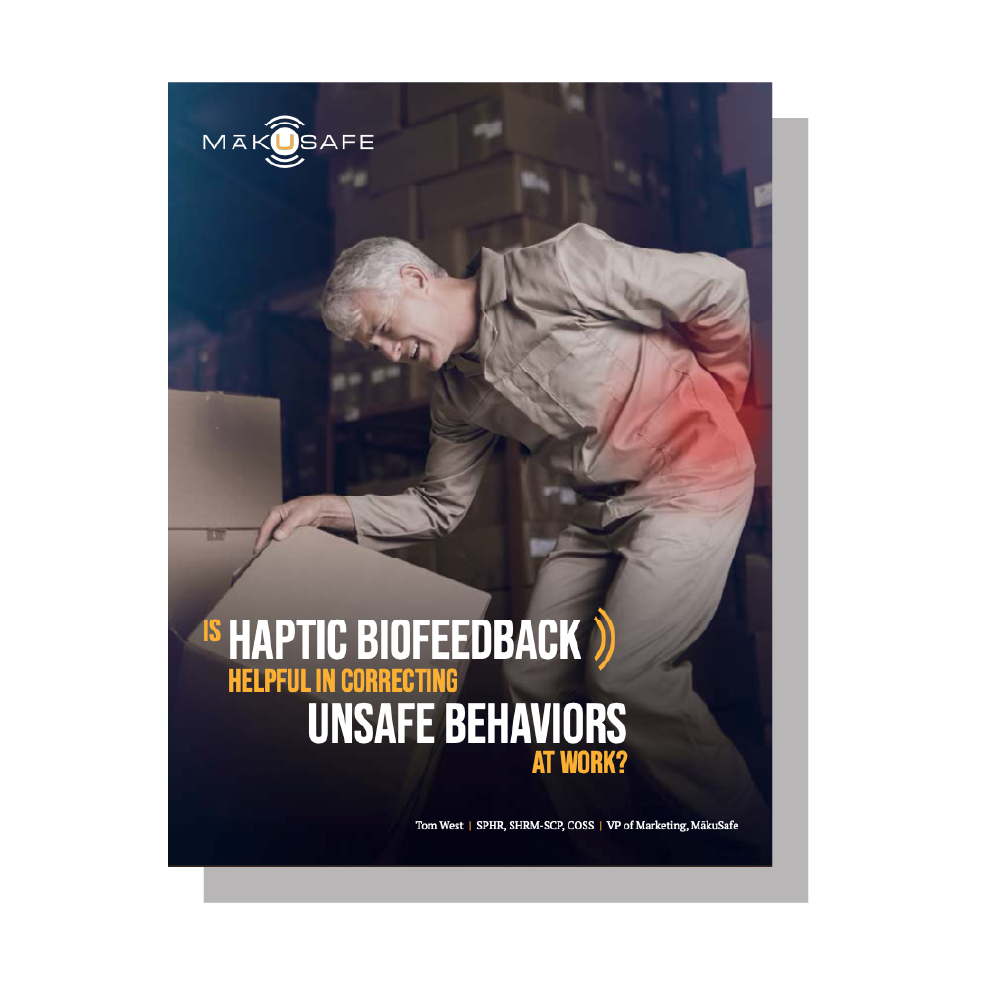
Is Haptic Biofeedback Helpful in Correcting Unsafe Behaviors at Work?
Haptic biofeedback is a term used to describe the use of physical sensations or vibrations to provide real-time feedback to a user about their behavior. This technology has been touted as a possible way to promote behavior change, but is that change lasting or meaningful?
Download the article below to read in full:
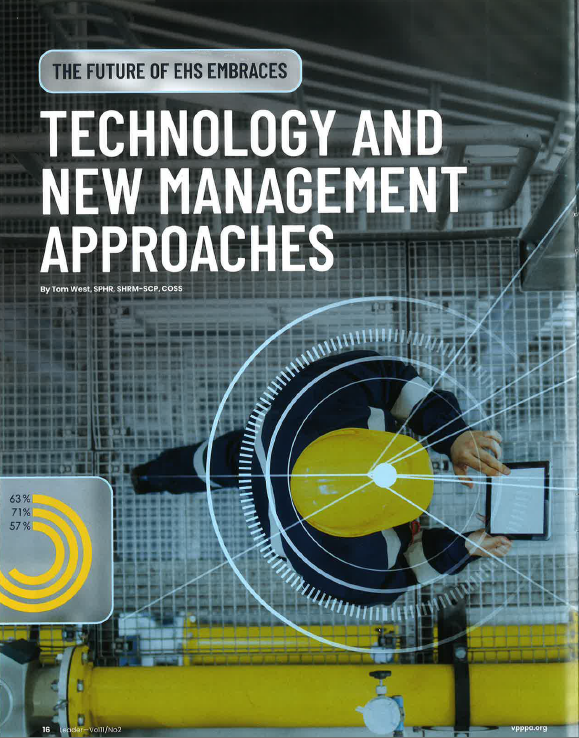
VPPPA Leader Magazine Article
THE FUTURE OF EHS EMBRACES TECHNOLOGY AND NEW MANAGEMENT APPROACHES
By: Tom West SPHR, SHRM-SCP, COSS
Vol.11 No.2 Jan 2025
This article explores the pivotal role of data, technology, and new management approaches in shaping the future of EHS, and highlights the imperative for organizations to adapt or risk falling behind.
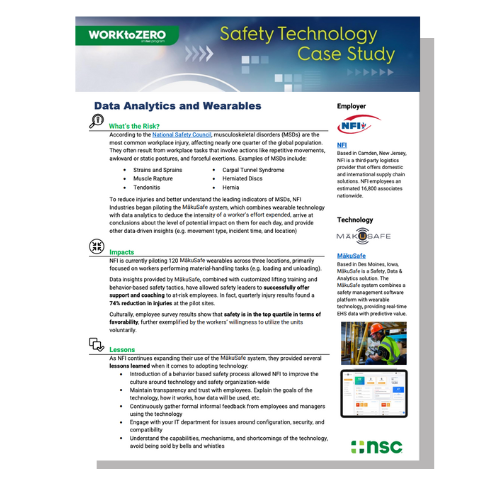
National Safety Council Work to Zero Case Study
According to the National Safety Council, musculoskeletal disorders (MSDs) are the most common workplace injury, affecting nearly one quarter of the global population. They often result from workplace tasks that involve actions like repetitive movements, awkward or static postures, and forceful exertions. The following case study, a joint effort with the NSC’s Work to Zero Advisory Council, focused on reducing injuries and better understanding leading indicators of MSDs.
The client piloted 120 MākuSafe wearables across three locations, primarily focused on workers performing material-handling tasks. Data insights provided by MākuSafe, combined with customized lifting training and behavior-based safety tactics, allowed safety leaders to successfully offer support and coaching to at-risk employees. Quarterly injury results found a 74% reduction in injuries at the pilot sites. Culturally, employee survey results show that safety is in the top quartile in terms of favorability. Download the full case study here. WTZ NSC MakuSafe Case Study
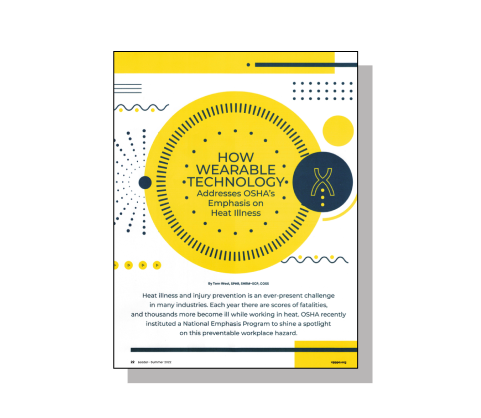
How Wearable Technology Addresses OSHA’s Emphasis on Heat Illness
Heat illness and injury prevention is an ever-present challenge in many industries. Each year there are scores of fatalities, and thousands more become ill while working in heat. OSHA recently instituted a National Emphasis Program to shine a spotlight on this preventable workplace hazard.
Download the article below to read in full:
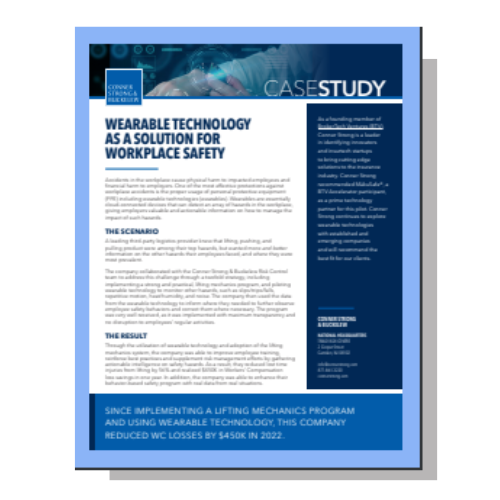
CASE STUDY: Wearable Technology As A Solution for Workplace Safety
In a recent case study, experts from Conner Strong & Buckelew explored how wearable technology can improve workplace safety. The results were incredible. Through the utilization of wearable technology and adoption of the lifting mechanics system, a third-party logistics company reduced lost time injuries from lifting by 56% and realized $450K in Workers’ Compensation loss savings in one year. Check out the full case study here: 1980CSB-CaseStudy-Makusafe_Generic_4
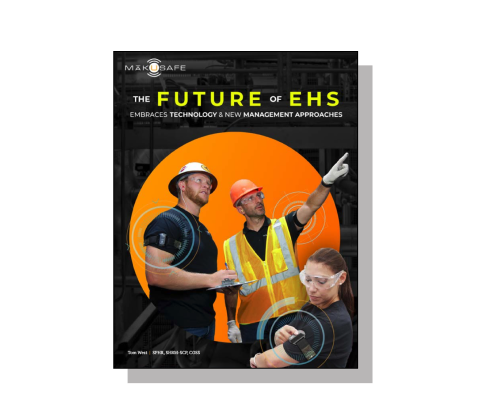
The Future of EHS Embraces Technology & New Management Approaches
In the ever-evolving landscape of workplace safety, the future of Environment, Health, and Safety (EHS) management is now. It’s time to shed outdated practices and embrace innovation to ensure the well-being of workers while enhancing operational efficiency.
Download the article below to read in full:

Wearable Tech Use Cases: Manufacturing
MākuSafe® is proud to work with manufacturers and industrial organizations globally. Our clients range from heavy industrial to light manufacturers, fabricators, assembly, millwork, consumer goods, and more. These case studies highlight various use case scenarios from manufacturers using our workforce wearable technology in their facilities.
DOWNLOAD HERE: Manufacturing Use Cases
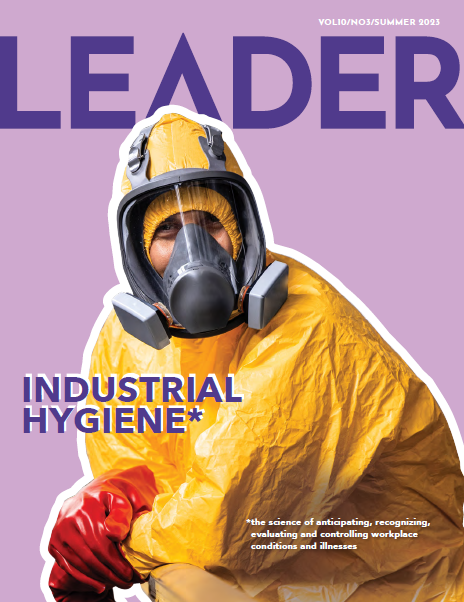
Enhancing Industrial Hygiene With Wearable Technology
In industry today, protecting the safety and health of front-line workers is of paramount importance. Industrial environments advance and evolve at a rapid pace, so do the potential risks and hazards that employees face on a daily basis. This is where industrial hygiene applies. Industrial hygiene refers to the science and art of understanding, identifying, evaluating, and controlling workplace conditions that may
cause injury or illness to workers. It involves the assessment and management of various physical, chemical, biological, ergonomic, and psychosocial factors that can affect the health and safety of employees.
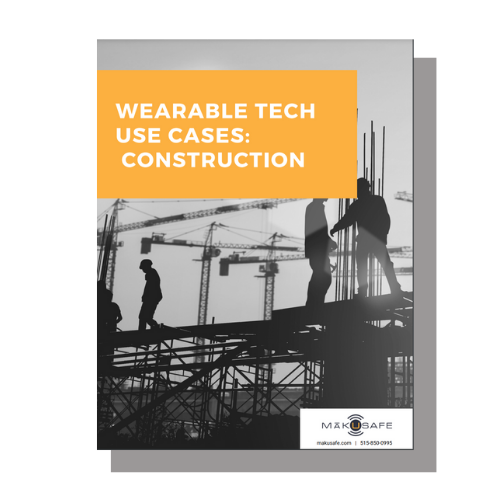
Wearable Tech Use Cases: Construction
MākuSafe® is proud to work with construction companies across the U.S. Our commercial construction clients utilize the MākuSafe® workforce wearable technology at job sites to monitor environmental conditions and hazardous motions as part of a proactive safety management system. These case studies show how the wearable safety device automates hazard identification and near-miss capture in a construction environment.
DOWNLOAD HERE: Construction Use Cases
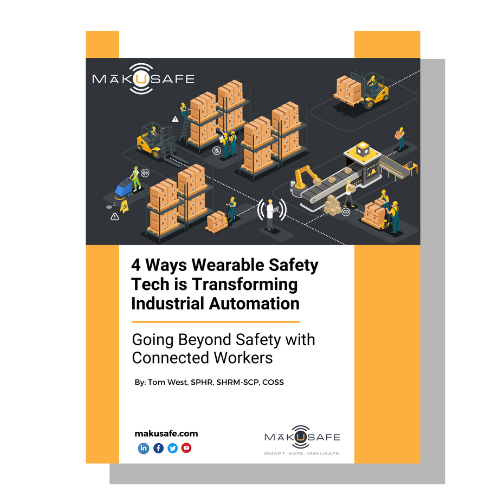
4 Ways Wearable Safety Tech is Transforming Industrial Automation
From our perspective, automation efforts frequently stall because they fail to interact with a plant’s most important asset – its people. Connected workers are a massive opportunity to increase the breadth of intelligent sensors throughout a manufacturing facility. Using only a small device worn in an armband, an entire workforce can automatically and continuously capture environmental, motion, observations from the front line, and location/proximity data. Discover 4 ways wearable tech is being used to accelerate digital transformation here>> 4 Ways Wearable Tech is Transforming Industrial Automation (1)

The MākuSafe® Model: Leveraging Predictive Information and Just-In-Time Solutions to Keep Workers Safe
Workplace wearables can go beyond biometrics and fitness, tracking useable data that’s relevant to employee safety and focuses on the environment around an employee, not the employee themselves. This data includes things such as environmental conditions and slips, trips and falls, providing a more complete picture of workplace risk. With this data, manufacturers and industrial organizations can better understand trends and create efficiencies and insurance carriers can target, select and price risk more specifically for policyholders and accelerate time to value on policies.
DOWNLOAD the article to read more.
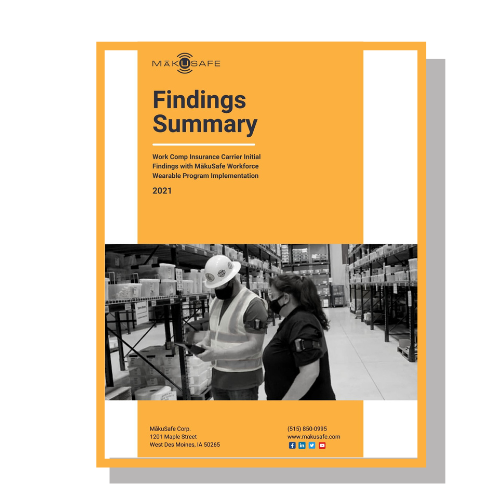
Workers Compensation Insurance Carrier Initial Findings with MākuSafe Solution
A large worker’s compensation insurance carrier piloted the MākuSafe safety technology with six of its policyholders with industrial operations over the course of two to six months, resulting in significant real reductions in claims. This findings report highlights some of the hazards identified and the overall results achieved during the test periods, including claims frequency reduced by 50% and claims severity reduced by 90%.
CLICK TO READ >> Work Comp Carrier Findings Program Summary (1)
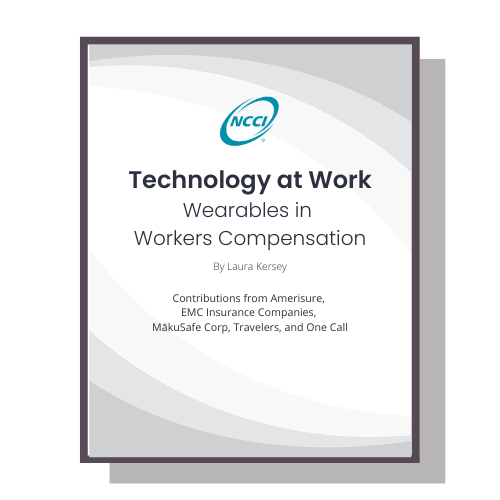
Technology at Work: Wearables in Workers Compensation
Is wearable technology a game changer for workers compensation?
“As wearable technology advances, the interviewed stakeholders agree that wearables are well positioned to become an integral part of the future workplace and the workers compensation system. Notably, with more widespread use, wearables could provide data and information that could lead to safer workplaces and may help reduce recovery times, facilitate return-to-work, and reduce the overall costs of workers compensation claims. As one stakeholder noted, “By preventing injuries, everybody wins: the employee, employer, agent, and the insurance company.”
Special thanks to organizations that generously shared their thoughts including EMC Insurance Companies, and MākuSafe Corp. Click Here to Read>>> Technology at Work: Wearables in Workers Compensation

The Importance of Tracking Near Misses and How Wearable Tech Can Help
This article covers the challenges many safety programs face and gives insight into how organizations can capture more of these “near misses” to predict and prevent occurrences in the future. In this article, you will discover:
– Why near-misses and almost-accidents are so crucial to employee safety
– The benefits of tracking more of these near-misses in an automated way
– How an organization can use near-miss data to predict and prevent accidents to better protect workers
DOWNLOAD the article to read more.

Workforce Wearables: New Use of Big Data for Insurers
Workplace wearables can go beyond biometrics and fitness, tracking useable data that’s relevant to employee safety and focuses on the environment around an employee, not the employee themselves. This data includes things such as environmental conditions and slips, trips and falls, providing a more complete picture of workplace risk. With this data, manufacturers and industrial organizations can better understand trends and create efficiencies and insurance carriers can target, select and price risk more specifically for policyholders and accelerate time to value on policies.
DOWNLOAD the article to learn more.
Get Started With MākuSafe
Schedule a demo to learn more, or visit our FAQ for more information.
Schedule A Demo

